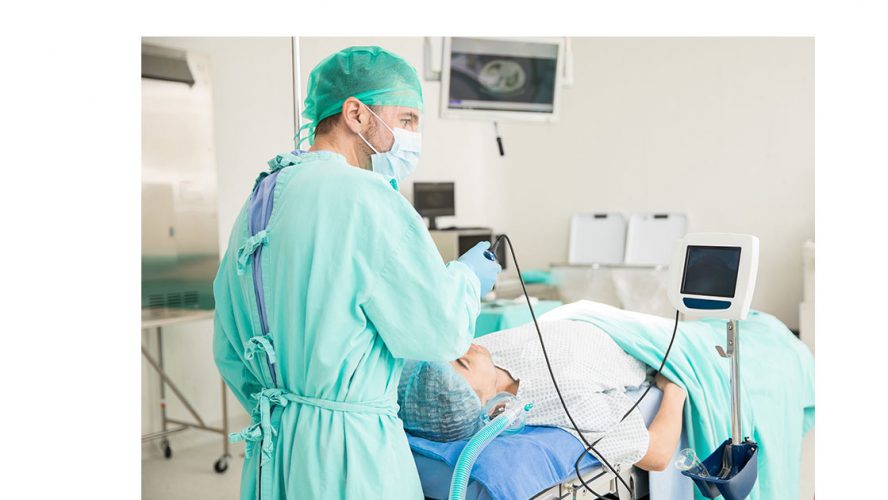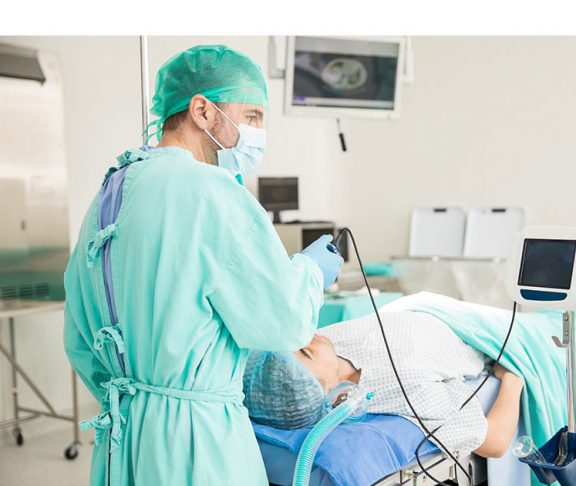Research & Innovation, Niagara College
By partnering with industry, Niagara College is at the forefront of innovative technologies to tackle COVID-19 — from creating vital medical supplies to helping engineer a UV-C LED system capable of killing the SARS-CoV-2 virus.
The onset of the global COVID-19 pandemic one year ago — with ongoing shortages in critical medical and protective equipment — has underscored the need for innovative solutions. While manufacturers are pivoting operations to address these challenges, many lack in-house engineering capabilities and expertise, and they’re looking to academic research and development strategic partnerships.
“We’ve all joined forces to tackle the challenges of the day,” says Dr. Marc Nantel, Vice President of Research and External Relations at Niagara College. “Innovative technologies to address the pandemic have arrived in record time, and more locally, we’ve seen our community, stakeholders, and industry partners come together to help each other.”
Rapid response for essential health equipment
Soon after the start of the pandemic, Niagara’s local health system faced a startling shortage of personal protective equipment (PPE) and reached out to Niagara College’s Research & Innovation division and its Walker Advanced Manufacturing Innovation Centre (WAMIC).
Researchers promptly engineered a face shield prototype using computer-aided design and then produced almost 40,000 face shields for frontline workers for Niagara Health and other community members throughout the province.
“The Research & Innovation division at Niagara College provided invaluable services at the beginning of the COVID-19 pandemic when PPE inventories were running low and the supply chains were disrupted,” says Amir Gill, Director of Capital Planning, Engineering Services, and Biomedical Engineering at Niagara Health. “I would term their efforts heroic, and they definitely helped Niagara Health keep our patients, staff, and visitors safe.”
Engineering critical-care intubation sleeves
Seriously-ill COVID-19 patients requiring assisted ventilation need intubation — a process where a laryngoscope is inserted into a patient’s mouth to view the larynx, helping to place the tube. During the continued influx of patients, some hospitals experienced a shortage of this essential piece of equipment.
During a recent research partnership with McMaster University and Hamilton Health Sciences, engineers at Niagara College’s WAMIC have reverse-engineered and created a parametric CAD model of a video laryngoscope sheath to prepare for potential supply-chain interruptions.
“Given that supply chains for laryngoscopes remain insecure, WAMIC’s new biomedically-compatible 3D printer will enable researchers to locally supply laryngoscope inventory matched to observed patient larynx size — avoiding wrong-size order delays and waste,” says Dr. Nantel.
Innovative UV-C light technology to fight COVID-19
Horticultural lighting company Brilliant Photonics developed a powerful ultraviolet C (UV-C) LED system capable of killing viruses like SARS-CoV-2, the virus responsible for COVID-19, for use in places like hospital, long-term care homes, and other commercial environments.
It had the design, but without the necessary expertise or equipment, the company turned to WAMIC researchers to engineer a solution for high-performance cooling technology for itssystem. The WAMIC team is currently working with this industry partner to develop a high-temperature 3D-printed reflector cone, copper heatsink, and aluminum electrical housing and water housing.
Brilliant Photonics CEO Kevin LeBlanc describes the partnership as a win for everyone. “Students gets real industry experience, the college receives equipment and industry engagement, and we get the professional engineers and machines required for innovation,” he says.
All projects exist because of funding from the Niagara College-led SONAMI (Southern Ontario Network for Advanced Manufacturing Innovation), backed by the Federal Economic Development Agency for Southern Ontario.



